Homework Eight: Difference between revisions
No edit summary |
No edit summary |
||
| Line 30: | Line 30: | ||
At this point, we are ready to send the audio signal through a D/A converter -- which will essentially convolve the signal with a pulse function, say p(t). The pulse function is shown in the time domain ['''Figure 9'''] and the frequency domain ['''Figure 10'''] | At this point, we are ready to send the audio signal through a D/A converter -- which will essentially convolve the signal with a pulse function, say p(t). The pulse function is shown in the time domain ['''Figure 9'''] and the frequency domain ['''Figure 10'''] | ||
[[Image:p_t.jpg |thumb|center|upright=2|Figure | [[Image:p_t.jpg |thumb|center|upright=2|Figure 9: Pulse function in the time domain, p(t)]] | ||
[[Image:P_f.jpg |thumb|center|upright=2|Figure | [[Image:P_f.jpg |thumb|center|upright=2|Figure 10: Pulse function in the frequency domain, P(f)]] | ||
''Note: P(f) is Tsinc(fT)'' | |||
[[Image:x_step.jpg |thumb|center|upright=2|Figure | The convolution of the pulse function with the above FIR filtered function in the time domain ['''Figure 11'''] and the frequency domain ['''Figure 12'''] can be expressed as <math>\sum_{n=-\infty}^{\infty}x(nT)p(t-nT)</math> and <math>P(f)\left[ \sum_{n=-\infty}^{\infty}x(nT)e^{-j2 \pi fnT} \right]</math>, respectively. | ||
[[Image:x_frequency5.jpg |thumb|center|upright=2|Figure | |||
[[Image:x_step.jpg |thumb|center|upright=2|Figure 11: FIR filtered function convolved with p(t) (time)]] | |||
[[Image:x_frequency5.jpg |thumb|center|upright=2|Figure 12: FIR filtered function multiplied with P(f) (frequency)]] | |||
We are now very close to having the audio that we want -- now it would be good to run the signal through a low-pass filter to eliminate any high-frequency interference. As usual, we will convolve in time and multiply in frequency. The low pass filter in the time domain ['''Figure 13'''] and frequency domain ['''Figure 14'''] are shown below | |||
[[Image:lowpass_g_t.jpg |thumb|center|upright=2|Figure 13: Low pass filter in the time domain]] | |||
[[Image:lowpass_G_f.jpg |thumb|center|upright=2|Figure 14: Low pass filter in the frequency domain]] | |||
This is how digital sampling would work -- our final signal should now be the audio we desire. | |||
Revision as of 19:57, 8 November 2009
How does a CD player work with no oversampling, but digital filtering (1x oversampling)?
Recall that when the audio for a music CD is produced it has an infinite amount of data points which can be expressed as in the time domain [Figure 1] and in the frequency domain [Figure 2].
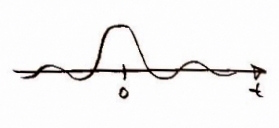
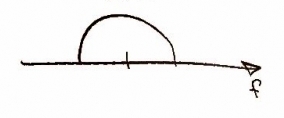
When one wants to store the data of (i.e. reading the data onto a CD in this case) an infinite number of data points is not ideal -- in fact, it is impossible. Therefore, we must sample the data at the (typical) rate of . This will give us a periodic function which we will call is the sampling period. It is common to allow a sampling rate of twice the frequency at which a human can hear (i.e. 2 x 22 kHz) -- that means, kHz.
Recall from class that in order to sample the original function, , we need to use a delta function. In other words, the continuous function of can be written as [Figure 3]. As one may expect, in the frequency domain we should get the same plot as in Figure 2, but it should repeat. In the frequency domain, this can be expressed as [Figure 4].
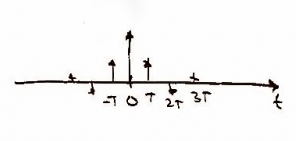
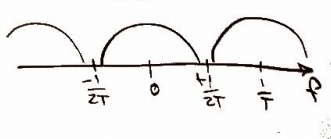
As one may suspect, in order to get a more accurate function you must take more data points -- in other words, a higher sampling rate (i.e. 2x, 8x, etc. oversampling) leads to a more accurate collection of data. For this case, we are asked to looked a digital sampling, or 1x oversampling. In order to accomplish this, we will convolve our function from above with a Finite Impulse Response filter (FIR filter). Let's call the FIR g(t) and define it as where is the oversampling rate. In our case . Because we are dealing with digital sampling, the convolution will result in the original function [Figure 5]. It is fairly easy to see that in the frequency domain, the FIR filter will be expressed as [Figure 6].

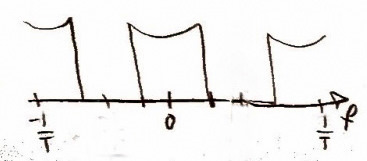
As we know, convolution in the time domain results in multiplication in the frequency domain. The results of the convolution and multiplication of the before mentioned FIR filter (time, frequency) are shown below:


At this point, we are ready to send the audio signal through a D/A converter -- which will essentially convolve the signal with a pulse function, say p(t). The pulse function is shown in the time domain [Figure 9] and the frequency domain [Figure 10]
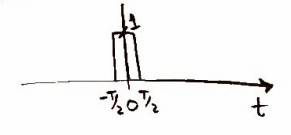
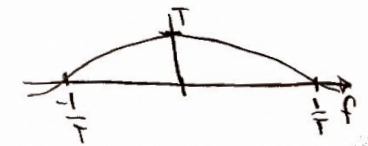
Note: P(f) is Tsinc(fT)
The convolution of the pulse function with the above FIR filtered function in the time domain [Figure 11] and the frequency domain [Figure 12] can be expressed as and , respectively.
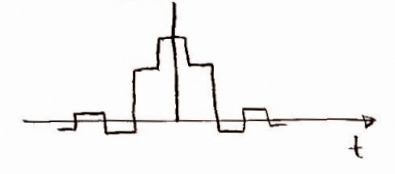
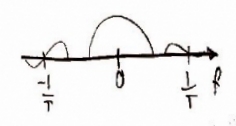
We are now very close to having the audio that we want -- now it would be good to run the signal through a low-pass filter to eliminate any high-frequency interference. As usual, we will convolve in time and multiply in frequency. The low pass filter in the time domain [Figure 13] and frequency domain [Figure 14] are shown below
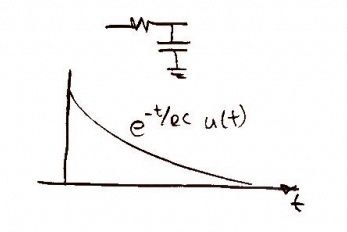
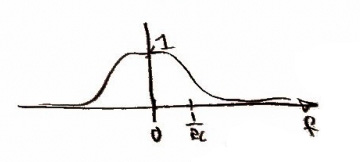
This is how digital sampling would work -- our final signal should now be the audio we desire.